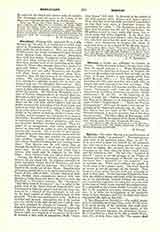

Messene, a titular see, suffragan to Corinth, in Achaia. Under this name at least, the city dates only from the fourth century B.C. When Epaminondas had crushed the Spartans at Leuctra, he recalled the scattered Messenians and caused them to build, on the slopes of Mount Ithome, a new capital which they called Messene (370 B.C.). The fortified walls surrounding this city were over five and a half miles in length, and were accounted the best in Greece. The portion of them which still remains justifies this reputation. Christianity early took root there, though only a few of its bishops are known (Le Quien, “Oriens christianus”, II, 195-98). At the beginning of the tenth century the “Notitia episcopatuum” of Leo the Wise gives Messene as an independent archbishopric (Gelzer, “Ungedruckte… Texte der Notitiae episcopatuum”, 551); and the same is true for the beginning of the fourteenth century (op. cit., 612). As this diocese does not figure in the ` Notitia” of the fifteenth century, it may be assumed that it had then ceased to exist. The little village of Mavromati, with a population of 600, the capital of the Deme of Ithome, now stands upon the ruins of ancient Messene.
S. VAILHE

